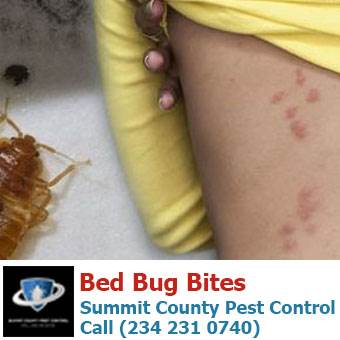Reputable A1 Bed Bug Treatment Houston - Proven Approaches
Reputable A1 Bed Bug Treatment Houston - Proven Approaches
Blog Article
Recognizing the Lifecycle of Pests for Targeted Control Strategies
Recognizing the lifecycle of pests is an essential element of efficient bug monitoring strategies. By understanding the different stages of development that pests undergo, an extra exact and targeted technique can be taken on to manage their populations. This understanding not just drops light on the susceptabilities within the pest lifecycle yet likewise paves the method for applying tactical measures that can interrupt their growth and recreation cycles. Through a much deeper understanding of just how insects prosper and progress, customized control approaches can be developed to attend to particular points in their lifecycle, eventually causing even more successful insect administration outcomes.
Importance of Recognizing Insect Lifecycle
Comprehending the lifecycle of insects is necessary for establishing reliable and targeted control techniques in bug monitoring. By comprehending the numerous phases a bug goes with from egg to adult, pest control specialists can recognize at risk factors in the lifecycle where intervention can be most effective.
In addition, recognizing the particular ecological problems essential for every stage of the bug's lifecycle can guide decisions on habitat alteration or exemption methods to disrupt the lifecycle and minimize pest populaces. This knowledge makes it possible for pest administration specialists to execute proactive procedures as opposed to counting solely on responsive therapies, bring about more long-term and sustainable parasite control solutions. Inevitably, a detailed understanding of bug lifecycles equips pest control experts to tailor their techniques properly, maximizing and decreasing ecological influences control end results.
Key Stages in Pest Advancement
To efficiently apply targeted control techniques in insect monitoring, a critical aspect lies in adequately recognizing and comprehending the key phases in pest advancement. Pest development usually is composed of several crucial phases that are crucial for their lifecycle and management.

Vulnerabilities in Insect Lifecycle
Throughout the various phases of a pest's lifecycle, distinct vulnerabilities arise that can be tactically targeted for efficient control procedures (A1 bed bug extermination houston). One critical susceptability lies in the egg stage, where bugs are usually extra vulnerable to certain insecticides or biological control representatives due to their soft external shell, making them much easier targets for intervention. Comprehending these susceptabilities in the pest lifecycle is important for establishing reliable and exact control approaches that efficiently manage pest populations while reducing environmental impact.
Applying Targeted Control Actions

Implementing targeted control steps typically entails a multi-faceted method. This may include environment alteration to advice make the setting much less welcoming to parasites, such as eliminating standing water for mosquito control or sealing access points for rats. Furthermore, organic control methods can be made use of, where natural killers or virus are introduced to keep bug populaces in check.
Integrated Parasite Administration (IPM) strategies that combine various control procedures in a coordinated and lasting manner are usually the most effective in achieving long-lasting pest monitoring objectives. By executing targeted Our site control actions based on a complete understanding of pest lifecycles, insect populaces can be efficiently controlled while decreasing risks to human health and wellness and the atmosphere.
Improved Bug Administration Practices

In addition, the incorporation of biological control representatives, such as natural killers or microorganisms of parasites, can help decrease dependence on chemical pesticides and advertise a more balanced ecological community. Carrying out physical barriers and catches can also become part of improved pest management methods, offering non-toxic and targeted solutions for parasite control. In addition, the use of pheromones and various other semiochemicals can disrupt pest mating patterns and communication, bring about reduced parasite populaces gradually.
Conclusion
To conclude, comprehending the lifecycle of bugs is critical for effective parasite administration methods. By determining key phases in parasite development and susceptabilities in their lifecycle, targeted control procedures can be carried out to reduce parasite populations. Boosted bug monitoring methods can aid reduce the dependence on broad-spectrum pesticides and promote even more eco pleasant and sustainable bug control methods. This expertise plays an essential function in maintaining healthy and balanced ecosystems and agricultural efficiency.
Recognizing the lifecycle of pests is essential for establishing reliable and targeted control techniques in insect management. By understanding the numerous phases an insect goes through from egg to grownup, pest control specialists can identify prone factors in the lifecycle where intervention can be most successful. Inevitably, a complete understanding of insect lifecycles encourages bug control professionals to customize their techniques properly, making best use of and minimizing ecological impacts control outcomes.
By executing targeted control procedures based on a thorough understanding of pest lifecycles, bug populations can Get the facts be efficiently controlled while minimizing risks to human health and wellness and the setting.
By determining crucial stages in parasite development and vulnerabilities in their lifecycle, targeted control measures can be executed to lessen insect populations.
Report this page